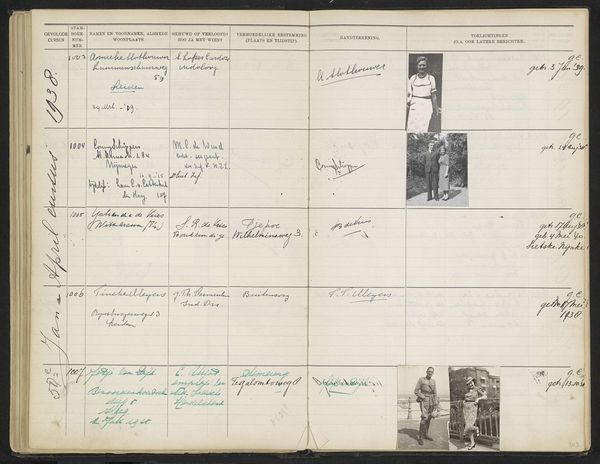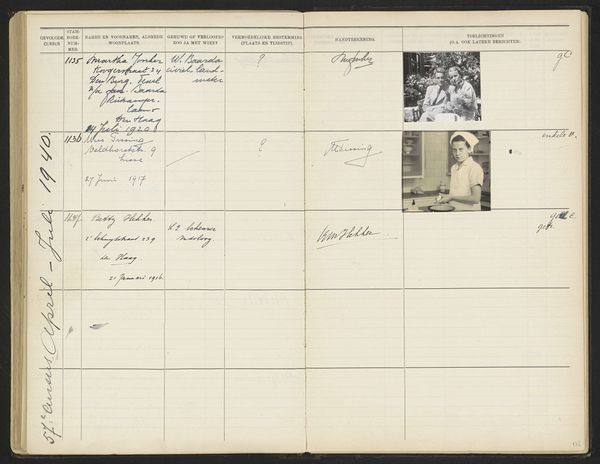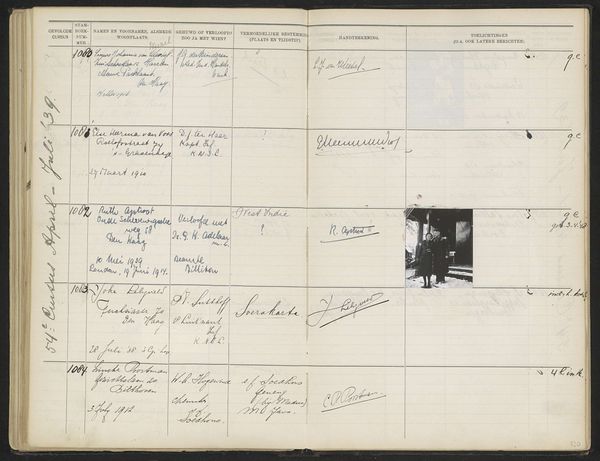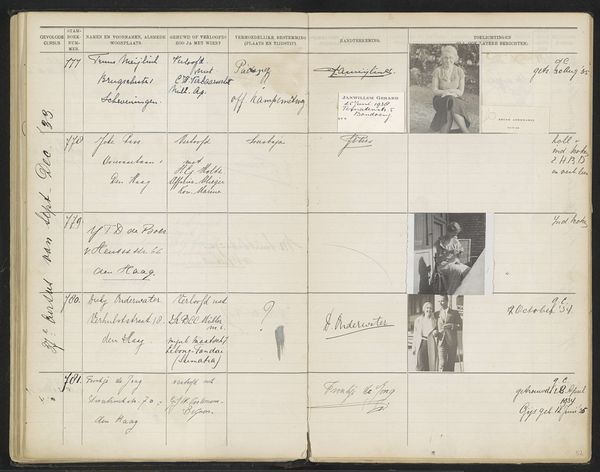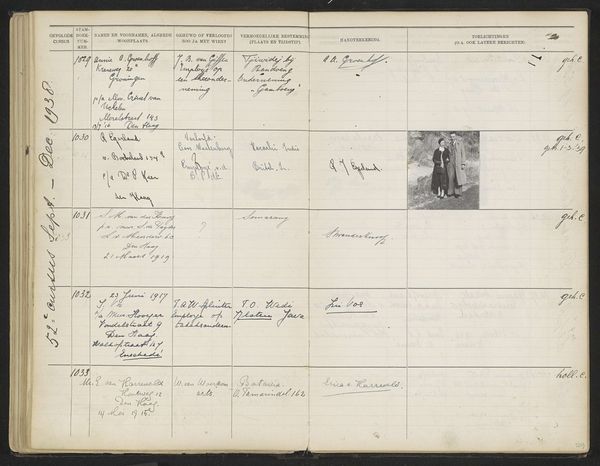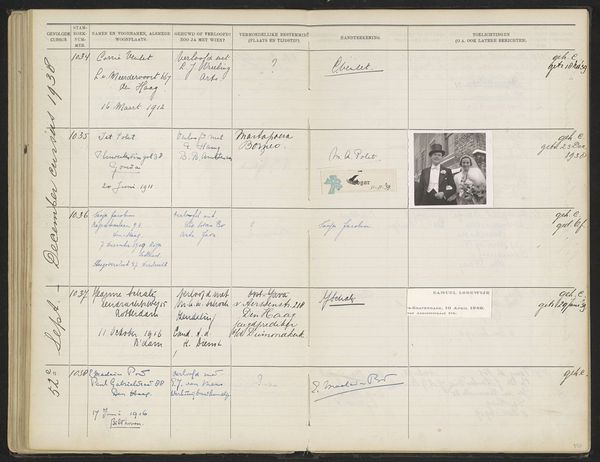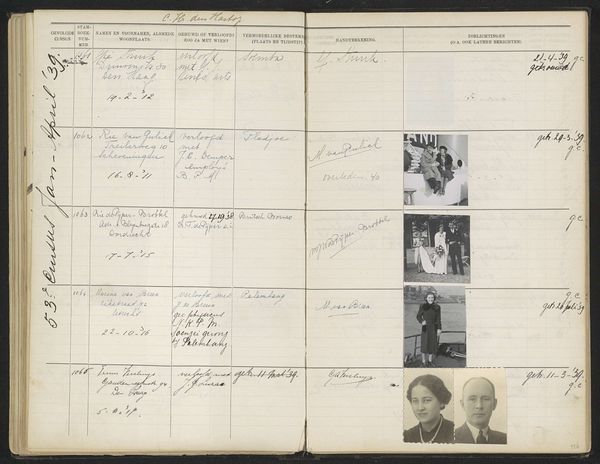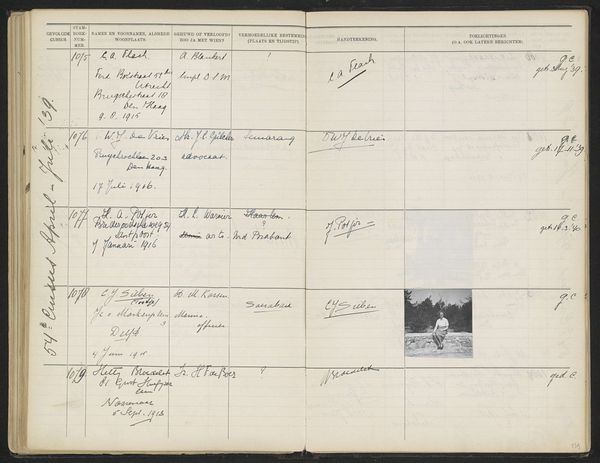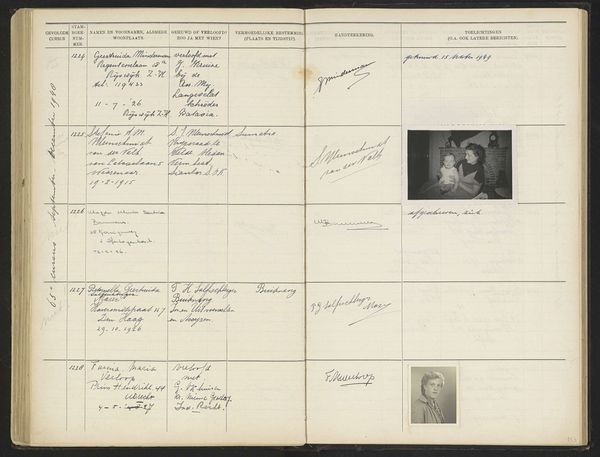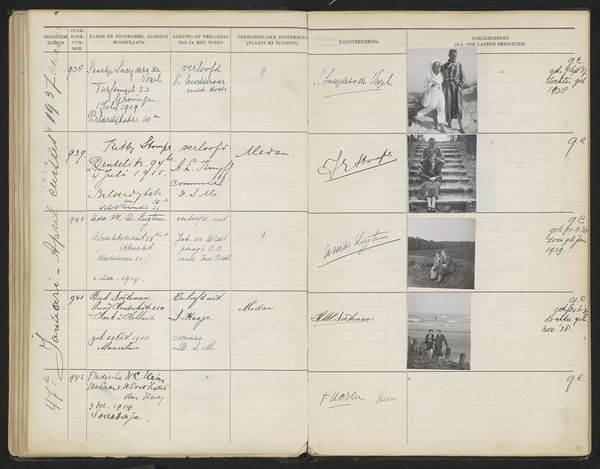
Blad 143 uit Stamboek van de leerlingen der Koloniale School voor Meisjes en Vrouwen te 's-Gravenhage deel II (1930-1949) Possibly 1947
0:00
0:00
print, paper, photography
#
portrait
# print
#
paper
#
photography
Dimensions: height 337 mm, width 435 mm
Copyright: Rijks Museum: Open Domain
Curator: I am struck by the poignant humanity held within "Blad 143," likely from 1947, taken from a register of students at the Colonial School for Girls and Women in The Hague. Its format and materials of paper, photography, and print, present the institutional architecture framing the personal lives of women in a bygone era. Editor: There’s an overwhelming sense of order but also of something held back—hidden. It feels intensely personal, like glancing through someone’s old letters in an attic, or like it's a relic of an age that prized conformity and order above all. Curator: Indeed, the seemingly simple bookbinding belies the weight it carries. Think of the labor that went into not just the printing but the sourcing of paper at that time. Consider also the socio-economic context of the Colonial School: this object whispers about the very structures of colonial ambition itself, the kind of social engineering necessary to sustain its influence. Editor: Looking at these faint, grainy photographs attached within—those solemn, watchful eyes of the women and the carefully printed script documenting the details of their lives...they're really captivating. Almost ghostlike, yet tied so deliberately to the tangible record of a colonial project, as you mentioned. It is fascinating how something with such official intent carries so much raw emotion. Curator: Exactly. It prompts us to question the roles of documentation and archival practices in shaping individual identity within societal structures. Who gets remembered, and how? Editor: It reminds me that history isn't some monolithic entity but millions of smaller, intersecting narratives – mostly untold or unseen. This artifact holds just a tiny handful of such stories, captured and frozen, but bursting with unvoiced meaning. Curator: I concur entirely. It’s a sober reminder that we examine historical processes not in abstract terms, but through the everyday encounters of ordinary people. Editor: Yes, ultimately, in our fleeting gaze, we bring them—however slightly—back to life.
Comments
No comments
Be the first to comment and join the conversation on the ultimate creative platform.
